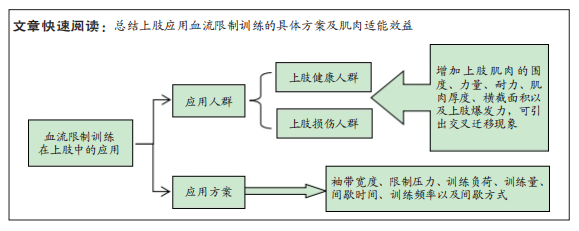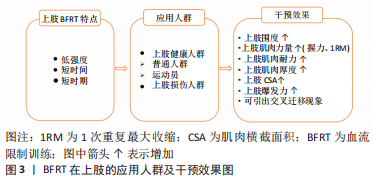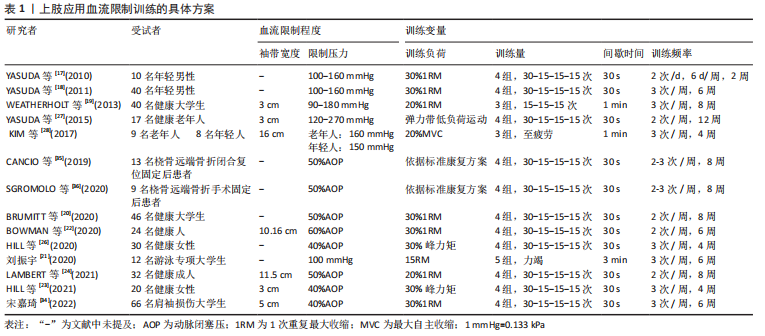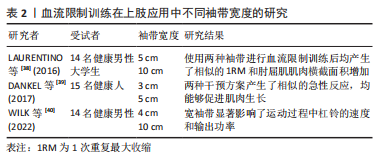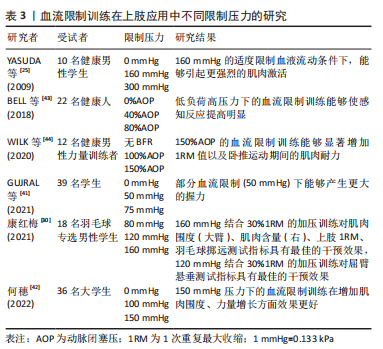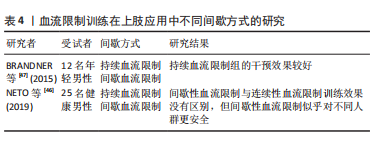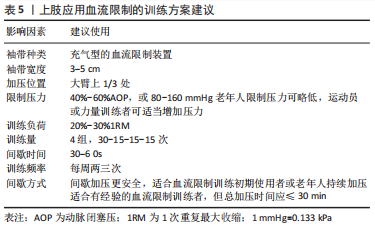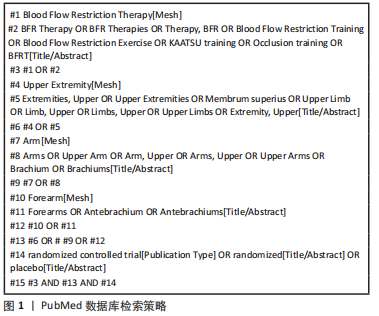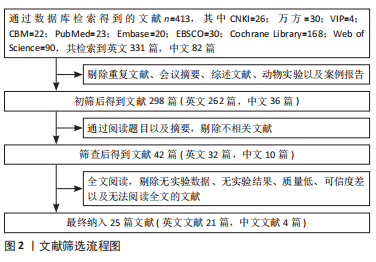[1] SATO Y. The history and future of KAATSU Training. Int J Kaatsu Train Res. 2005;1(1):1-5.
[2] 陈科奕,王定宣,张梦瑶.加压四肢低负荷训练对核心肌群的表面肌电和等速屈伸肌力的影响[J].中国组织工程研究,2022,26(17):2744-2748.
[3] GRØNFELDT BM, LINDBERG NIELSEN J, MIERITZ RM, et al. Effect of blood-flow restricted vs heavy-load strength training on muscle strength: Systematic review and meta-analysis. Scand J Med Sci Sports. 2020;30(5): 837-848.
[4] 牛严君,乔玉成,范艳芝.加压训练对受试者肌肉形态和功能的影响:Meta分析[J].首都体育学院学报,2020,32(1):25-34+86.
[5] 车同同,李志远,杨铁黎,等.6周低强度加压组合高强度抗阻训练对青少年女子摔跤运动员身体核心区和下肢肌肉力量的影响[J].首都体育学院学报,2022,34(3):333-341.
[6] 耿宇,吴雪萍.血流限制与高强度组合力量训练对残奥高山滑雪运动员下肢肌肉肌力和募集能力的影响[J].体育科学,2021,41(8):19-24.
[7] WORTMAN RJ, BROWN SM, SAVAGE-ELLIOTT I, et al. Blood Flow Restriction Training for Athletes: A Systematic Review. Am J Sports Med. 2021;49(7): 1938-1944.
[8] FERRAZ RB, GUALANO B, RODRIGUES R, et al. Benefits of Resistance Training with Blood Flow Restriction in Knee Osteoarthritis. Med Sci Sports Exerc. 2018;50(5):897-905.
[9] JARDIM RAC, DE SOUSA TS, DOS SANTOS WNN, et al. Blood flow restriction with different load levels in patients with knee osteoarthritis: protocol of a randomized controlled trial. Trials. 2022;23(1):41.
[10] HUGHES L, PATON B, HADDAD F,et al. Comparison of the acute perceptual and blood pressure response to heavy load and light load blood flow restriction resistance exercise in anterior cruciate ligament reconstruction patients and non-injured populations. Phys Ther Sport. 2018;33:54-61.
[11] 李奇,李蕊,罗昌禄,等.血流限制性运动对前交叉韧带重建术后膝关节功能的影响[J].广东医学,2019,40(10):1405-1408.
[12] KILGAS MA, LYTLE LLM, DRUM SN, et al. Flow Restriction to Improve Quadriceps Function Long After ACL Reconstruction. Int J Sports Med. 2019;40(10):650-656.
[13] 陈蓉,曾庆,巩泽,等.不同模式下血流限制治疗老年性肌肉减少症的效果与安全因素[J].中国组织工程研究,2021,25(32):5215-5221.
[14] BARBALHO M, ROCHA AC, SEUS TL, et al. Addition of blood flow restriction to passive mobilization reduces the rate of muscle wasting in elderly patients in the intensive care unit: a within-patient randomized trial. Clin Rehabil. 2019;33(2):233-240.
[15] 李新通,潘玮敏,覃华生,等.血流限制训练:加速肌肉骨骼康复的新方法[J].中国组织工程研究,2019,23(15):2415-2420.
[16] WILSON JM, LOWERY RP, JOY JM, et al. Practical blood flow restriction training increases acute determinants of hypertrophy without increasing indices of muscle damage. J Strength Cond Res. 2013;27(11):3068-3075.
[17] YASUDA T, FUJITA S, OGASAWARA R, et al. Effects of low-intensity bench press training with restricted arm muscle blood flow on chest muscle hypertrophy: a pilot study. Clin Physiol Funct Imaging. 2010;30(5):338-343.
[18] YASUDA T, OGASAWARA R, SAKAMAKI M, et al. Combined effects of low-intensity blood flow restriction training and high-intensity resistance training on muscle strength and size. Eur J Appl Physiol. 2011;111(10):2525-2533.
[19] WEATHERHOLT A, BEEKLEY M, GREER S, et al. Modified Kaatsu training: adaptations and subject perceptions. Med Sci Sports Exerc. 2013;45(5): 952-961.
[20] BRUMITT J, HUTCHISON MK, KANG D, et al. Blood Flow Restriction Training for the Rotator Cuff: A Randomized Controlled Trial. Int J Sports Physiol Perform. 2020;15(8):1175-1180.
[21] 刘振宇. 卧姿划船动作加压抗阻训练对游泳专项学生上肢力量的影响研究[D].北京:北京体育大学,2020.
[22] BOWMAN EN, ELSHAAR R, MILLIGAN H, et al. Upper-extremity blood flow restriction: the proximal, distal, and contralateral effects-a randomized controlled trial. J Shoulder Elbow Surg. 2020;29(6):1267-1274.
[23] HILL EC, HOUSH TJ, KELLER JL, et al. Patterns of responses and time-course of changes in muscle size and strength during low-load blood flow restriction resistance training in women. Eur J Appl Physiol. 2021;121(5):1473-1485.
[24] LAMBERT B, HEDT C, DAUM J, et al. Blood Flow Restriction Training for the Shoulder: A Case for Proximal Benefit. Am J Sports Med. 2021;49(10): 2716-2728.
[25] YASUDA T, BRECHUE WF, FUJITA T, et al. Muscle activation during low-intensity muscle contractions with restricted blood flow. J Sports Sci. 2009; 27(5):479-489.
[26] HILL EC, HOUSH TJ, KELLER JL, et al. Low-load blood flow restriction elicits greater concentric strength than non-blood flow restriction resistance training but similar isometric strength and muscle size. Eur J Appl Physiol. 2020;120(2):425-441.
[27] YASUDA T, FUKUMURA K, UCHIDA Y, et al. Effects of Low-Load, Elastic Band Resistance Training Combined With Blood Flow Restriction on Muscle Size and Arterial Stiffness in Older Adults. J Gerontol A Biol Sci Med Sci. 2015;70(8):950-958.
[28] KIM J, LANG JA, PILANIA N, et al. Effects of blood flow restricted exercise training on muscular strength and blood flow in older adults. Exp Gerontol. 2017;99:127-132.
[29] 魏佳,李博,杨威,等.血流限制训练的应用效果与作用机制[J].体育科学,2019,39(4):71-80.
[30] 康红梅. 不同剂量加压训练对羽毛球专选学生上肢专项力量的影响研究[D].长春:东北师范大学,2021:15-43.
[31] YAMANAKA T, FARLEY RS, CAPUTO JL. Occlusion training increases muscular strength in division IA football players. J Strength Cond Res. 2012;26(9): 2523-2529.
[32] 郑林.血流限制训练对青少年运动员篮球专项力量素质的影响研究[D].昆明:云南师范大学,2021:15-54.
[33] 李志远,虞松坤,楼恒阳,等.加压训练对大学生男子网球运动员最大力量和灵敏素质的影响[J].福建体育科技,2022,41(3):49-54.
[34] 宋嘉琦. BFR训练对过顶投掷式项目肩袖损伤大学生肩关节功能影响的研究[D].西安:西安体育学院,2022:9-22.
[35] CANCIO JM, SGROMOLO NM, RHEE PC. Blood Flow Restriction Therapy after Closed Treatment of Distal Radius Fractures. J Wrist Surg. 2019;8(4): 288-294.
[36] SGROMOLO NM, CANCIO JM, RHEE PC. Safety and Efficacy of Blood Flow Restriction Therapy after Operative Management of Distal Radius Fractures: A Randomized Controlled Study. J Wrist Surg. 2020;9(4):345-352.
[37] 王永超,王保臣,魏祝颖等.血流限制法对交叉迁移现象的诱导及肌肉功能重建的作用[J].中国组织工程研究,2022,26(17):2762-2767.
[38] LAURENTINO GC, LOENNEKE JP, TEIXEIRA EL, et al. The Effect of Cuff Width on Muscle Adaptations after Blood Flow Restriction Training. Med Sci Sports Exerc. 2016;48(5):920-925.
[39] DANKEL SJ, BUCKNER SL, COUNTS BR, et al. The acute muscular response to two distinct blood flow restriction protocols. Physiol Int. 2017;104(1):64-76.
[40] WILK M, KRZYSZTOFIK M, FILIP A, et al. Short-Term Blood Flow Restriction Increases Power Output and Bar Velocity During the Bench Press. J Strength Cond Res. 2022;36(8):2082-2088.
[41] GUJRAL T, SUBBURAJ J, SHARMA K. Effect of moderate intensity resistance training with blood flow restriction on muscle strength and girth in young adults -a randomized control trial. J Complement Integr Med. 2021. doi: 10.1515/jcim-2021-0271.
[42] 何穗.血流限制抗阻训练对大学生上肢肌适能的影响[D].武汉:江汉大学,2022.
[43] BELL ZW, BUCKNER SL, JESSEE MB, et al. Moderately heavy exercise produces lower cardiovascular, RPE, and discomfort compared to lower load exercise with and without blood flow restriction. Eur J Appl Physiol. 2018;118(7):1473-1480.
[44] WILK M, KRZYSZTOFIK M, FILIP A, et al. The Acute Effects of External Compression With Blood Flow Restriction on Maximal Strength and Strength-Endurance Performance of the Upper Limbs. Front Physiol. 2020; 11:567.
[45] 魏佳,李博,冯连世,等.血流限制训练的方法学因素及潜在安全性问题[J].中国体育科技,2019,55(3):3-12.
[46] NETO GR, DA SILVA JCG, FREITAS L, et al. Effects of strength training with continuous or intermittent blood flow restriction on the hypertrophy, muscular strength and endurance of men. Acta Scientiarum. Health Sciences. 2019;41: 42273.
[47] BRANDNER CR, KIDGELL DJ, WARMINGTON SA. Unilateral bicep curl hemodynamics: Low-pressure continuous vs high-pressure intermittent blood flow restriction. Scand J Med Sci Sports. 2015;25(6):770-777.
[48] SCOTT BR, LOENNEKE JP, SLATTERY KM, et al. Exercise with blood flow restriction: an updated evidence-based approach for enhanced muscular development. Sports Med. 2015;45(3):313-325.
[49] 瞿超艺,覃飞,徐旻霄,等.加压训练在体育应用时的禁忌与风险防范[J].中国体育科技,2019,55(5):3-7.
[50] 刘申,王硕,姬卫秀.加压训练的应用及限制研究进展[J].中国康复医学杂志,2022,37(3):421-426.
|
